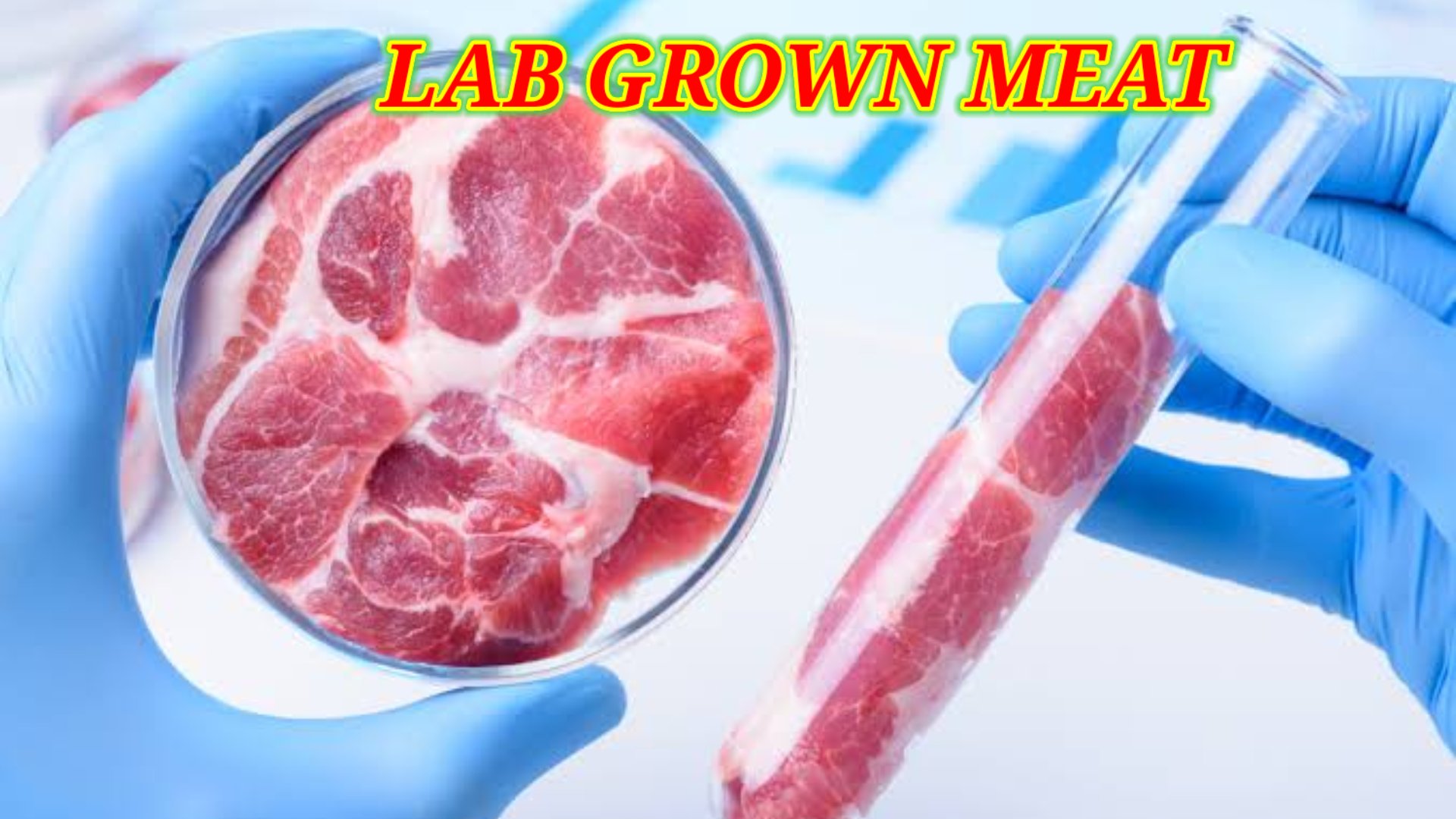Lab-Grown Meat: A Revolutionary Breakthrough in Sustainable Food Production
Lab-Grown Meat: A Revolutionary Breakthrough in Sustainable Food Production
Introduction:
Lab-grown meat, also known as cultured meat or cell-based meat, is a groundbreaking innovation poised to revolutionize the food industry. This emerging technology allows scientists to produce real meat without the need for traditional animal agriculture. In this article, we explore the concept of lab-grown meat, its potential benefits, and its implications for sustainability and animal welfare.
Section 1: Understanding Lab-Grown Meat
Lab-grown meat is produced through a process called cellular agriculture. It involves extracting a small number of animal cells, typically from a biopsy or non-invasive sampling, and cultivating them in a lab-controlled environment. These cells are then nourished with a growth medium containing essential nutrients, enabling them to multiply and develop into muscle tissue. The result is a product that closely resembles conventional meat in terms of taste, texture, and nutritional composition.
Section 2: Environmental Sustainability
Lab-grown meat holds immense potential for addressing the environmental challenges associated with traditional livestock farming. Conventional meat production requires vast amounts of land, water, and feed, contributing to deforestation, water pollution, and greenhouse gas emissions. In contrast, lab-grown meat has a significantly lower environmental footprint. It requires minimal land use, reduces water consumption by up to 90%, and produces fewer greenhouse gas emissions. By alleviating the pressure on natural resources, lab-grown meat has the potential to mitigate climate change and conserve biodiversity.
Section 3: Animal Welfare
One of the compelling ethical advantages of lab-grown meat is its potential to improve animal welfare. Traditional meat production often involves inhumane practices, including crowded and unsanitary conditions, routine use of antibiotics, and painful procedures. Lab-grown meat eliminates the need for raising and slaughtering animals, reducing animal suffering. It offers a cruelty-free alternative that can satisfy the demand for meat while reducing the dependence on industrial-scale farming.
Section 4: Health and Food Safety
Lab-grown meat has the potential to address some health concerns associated with conventional meat consumption. It can be produced without the use of hormones, antibiotics, or other additives commonly found in traditional meat products. Furthermore, the controlled environment in which lab-grown meat is produced minimizes the risk of foodborne illnesses, such as Salmonella or E. coli contamination, associated with conventional meat.
Section 5: Challenges and Future Outlook
Despite its potential, lab-grown meat faces several challenges that must be overcome for widespread adoption. The high cost of production, scalability, regulatory approval, and public acceptance are among the key hurdles. However, ongoing research and development efforts are driving innovations to address these challenges, aiming to make lab-grown meat more accessible and affordable in the future.
Frequently asked questions and their answers related to lab grown meat:
Q: What is lab-grown meat?
A: Lab-grown meat, also known as cultured meat or cell-based meat, is real meat produced by culturing animal cells in a lab-controlled environment. It is created without the need for traditional animal agriculture, eliminating the need for raising and slaughtering animals.
Q: How is lab-grown meat produced?
A: The production of lab-grown meat involves extracting a small number of animal cells, typically through a biopsy or non-invasive sampling. These cells are then cultivated in a nutrient-rich growth medium, allowing them to multiply and develop into muscle tissue. The result is a product that closely resembles conventional meat in terms of taste, texture, and nutritional composition.
Q: Is lab-grown meat safe to consume?
A: Yes, lab-grown meat is rigorously tested for safety and undergoes the same stringent food safety regulations as traditional meat products. The controlled lab environment minimizes the risk of foodborne illnesses associated with conventional meat. Additionally, lab-grown meat can be produced without the use of hormones, antibiotics, or other additives commonly found in traditional meat.
Q: What are the environmental benefits of lab-grown meat?
A: Lab-grown meat offers significant environmental advantages over traditional meat production. It requires minimal land use, reduces water consumption by up to 90%, and generates fewer greenhouse gas emissions. By alleviating the strain on natural resources, lab-grown meat has the potential to mitigate deforestation, water pollution, and climate change.
Q: How does lab-grown meat impact animal welfare?
A: Lab-grown meat has the potential to improve animal welfare as it eliminates the need for raising and slaughtering animals. Conventional meat production often involves inhumane practices such as crowded and unsanitary conditions, routine use of antibiotics, and painful procedures. Lab-grown meat offers a cruelty-free alternative that reduces animal suffering.
Q: Is lab-grown meat available for commercial purchase?
A: As of my knowledge cutoff in September 2021, lab-grown meat is not widely available for commercial purchase. However, several companies are actively researching and developing lab-grown meat products, aiming for future commercialization. It is anticipated that with further advancements and regulatory approvals, lab-grown meat will become more accessible in the coming years.
Q: What are the challenges facing lab-grown meat production?
A: Lab-grown meat production faces challenges such as high costs, scalability, regulatory approval, and public acceptance. The production process needs to become more efficient and cost-effective to compete with conventional meat. Additionally, regulatory frameworks need to be established to ensure safety standards, and public education is necessary to build trust and acceptance of this innovative technology.
Q: How does lab-grown meat taste compared to conventional meat?
A: Lab-grown meat aims to replicate the taste and texture of conventional meat. The flavor profile and sensory experience are designed to closely resemble traditionally sourced meat. However, taste preferences can vary, and it may require further refinement as the technology continues to evolve.
Q: Does lab-grown meat have the same nutritional value as conventional meat?
A: Lab-grown meat has a comparable nutritional composition to conventional meat, as it is derived from animal cells. It contains proteins, fats, vitamins, and minerals similar to those found in traditionally sourced meat. However, specific nutritional profiles can vary depending on the production methods and the growth medium used.
Q: Can lab-grown meat help address food security and global hunger?
A: Lab-grown meat has the potential to contribute to food security by providing a sustainable and resource-efficient method of meat production. With a significantly reduced environmental footprint and the ability to produce meat without relying on traditional livestock farming, lab-grown meat can help meet the growing global demand for protein while reducing the pressure on land, water, and feed resources.
Please note that the answers provided here are based on the current understanding of lab-grown meat and may evolve as further research and advancements are made in the field.
Conclusion:
Lab-grown meat represents a remarkable advancement in sustainable food production, offering a viable solution to environmental concerns, animal welfare issues, and potential health risks associated with conventional meat consumption. With further advancements and support from consumers, policymakers, and the industry, lab-grown meat has the potential to reshape the future of our global food system.















Post a Comment